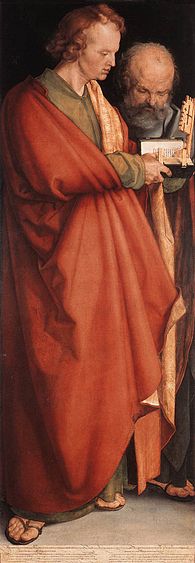BENEDICT XVI
GENERAL AUDIENCE
Paul VI Audience Hall
Wednesday, 23 August 2006
John, the Seer of Patmos
Dear Brothers and Sisters,
In the last Catechesis we had reached the meditation on the figure of the Apostle John. We had first sought to look at all that can be known of his life. Then, in a second Catechesis, we meditated on the central content of his Gospel and his Letters: charity, love. And today we are still concerned with the figure of John, this time to examine the Seer of the Book of Revelation. And let us immediately note that while neither the Fourth Gospel nor the Letters attributed to the Apostle ever bear his name, the Book of Revelation makes at least four references to it (cf. 1: 1, 4, 9; 22: 8).
It is obvious, on the one hand, that the author had no reason not to mention his own name, and on the other, that he knew his first readers would be able to precisely identify him. We know, moreover, that in the third century, scholars were already disputing the true factual identity of John of the “Apocalypse”.
For the sake of convenience we could also call him “the Seer of Patmos” because he is linked to the name of this island in the Aegean See where, according to his own autobiographical account, he was, as it were, deported “on account of the word of God and the testimony of Jesus” (Rv 1: 9).
It was on Patmos itself, “on the Lord’s Day… caught up in ecstasy” (Rv 1: 10), that John had a grandiose vision and heard extraordinary messages that were to have a strong influence on the history of the Church and of entire Western culture.
For example, from the title of his book – Apocalypse, Revelation – the words “apocalypse, apocalyptic” were introduced into our language and, although inaccurately, they call to mind the idea of an incumbent catastrophe.
The Book should be understood against the backdrop of the dramatic experiences of the seven Churches of Asia (Ephesus, Smyrna, Pergamum, Thyatira, Sardis, Philadelphia, Laodicea) which had to face serious difficulties at the end of the first century – persecutions and also inner tensions – in their witness to Christ.
John addresses them, showing acute pastoral sensitivity to the persecuted Christians, whom he exhorts to be steadfast in the faith and not to identify with the pagan world. His purpose is constituted once and for all by the revelation, starting with the death and Resurrection of Christ, of the meaning of human history.
The first and fundamental vision of John, in fact, concerns the figure of the Lamb who is slain yet standing (cf. Rv 5: 6), and is placed before the throne on which God himself is already seated.
By saying this, John wants first of all to tell us two things: the first is that although Jesus was killed with an act of violence, instead of falling heavily to the ground, he paradoxically stands very firmly on his own feet because, with the Resurrection, he overcame death once and for all.
The other thing is that Jesus himself, precisely because he died and was raised, henceforth fully shares in the kingship and saving power of the Father. This is the fundamental vision.
On this earth, Jesus, the Son of God, is a defenceless, wounded and dead Lamb. Yet he stands up straight, on his feet, before God’s throne and shares in the divine power. He has the history of the world in his hands.
Thus, the Seer wants to tell us: trust in Jesus, do not be afraid of the opposing powers, of persecution! The wounded and dead Lamb is victorious! Follow the Lamb Jesus, entrust yourselves to Jesus, take his path! Even if in this world he is only a Lamb who appears weak, it is he who triumphs!
(To continue reading, please see here)

